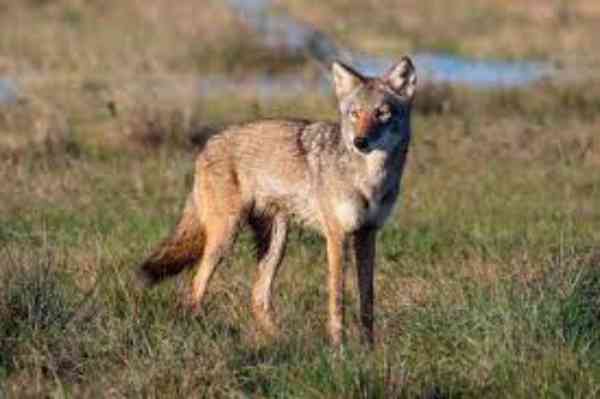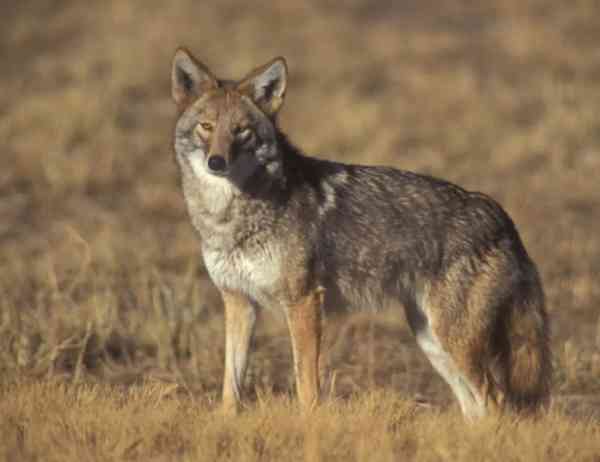Oklahoma is home to one of the most interesting creatures in the entire state – the coyote. This animal can be found throughout the state and its presence is an essential part of its ecosystem. Known for their cunning and intelligence, coyotes have been a part of Oklahoma’s natural landscape for centuries. They are known to exist across all terrain, from urban areas to deserts, making them uniquely adaptive animals that are also widely feared for their predatory habits. Though many people fear them due to their stealthy nature, coyotes play a vital role in Oklahoma’s ecosystems by controlling populations of small prey species and scavenging on carrion left behind by other animals.

Table of Contents
Habitat
In Oklahoma, coyotes are quite adaptable and can be found practically anywhere. They thrive in open grasslands and prairies, but they can also be seen near urban areas, wetlands, and even deserts. The chief component that contributes to the success of coyotes in Oklahoma is their ability to find food sources in a wide range of habitats. Coyotes primarily prey on small mammals, but they also hunt for rodents, insects, birds, fish and reptiles. In addition to these direct hunting activities, coyotes often scavenge meat from larger animals or explore trash bins for leftovers.
Diet
Coyotes in Oklahoma generally consume a very varied diet. They feed on small mammals such as mice and voles, but also enjoy eating fruits like berries and apples, insects, reptiles and ground-dwelling birds. Plant matter such as grass or even corn may also be taken advantage of when the opportunity arises. Deer carrion can be an important food source for these opportunistic animals. The diet of coyotes largely depends on the season and availability of different food sources. As they are nocturnal animals, coyotes are known to scavenge pastures at night as well as hunt during both day and night depending on their needs in order to survive.
Colour
Much like other mammals in Oklahoma Coyotes also come in different colours and shades depending on their environment. They can usually be observed with various muted shades of grey, brown, and even white fur coats. These shades help them not stand out too much when blending into their surroundings during hunting activities beneath a blanket of silver moonlight. While distinctly appearing brown in the sunlight, these creatures become almost completely camouflaged under darkness due to the heavy curve and tone of their fur.

Size, Lifespan and Weight
The average size of these creatures is between four and six feet long, depending on their age and gender. These animals live anywhere from ten to thirteen years but some can reach nearly fourteen years in age. The average weight of an adult coyote is only 30 pounds but this varies again depending on the sex of the animal and which specific breed it belongs to.
Predators
In Oklahoma, coyotes are no strangers to predators. In the wild, they have to watch out for hungry bobcats, eagles and hawks who swoop in to catch them mid-flight or off the ground, as well as mountain lions that lurk in the shadows. Even domestic dogs – like German Shepherds and Siberian Huskies – can be a danger if threatened. Coyotes also have to worry about ravenous badgers who tunnel deep underneath them in search of a meal.

Reproduction
They reproduce once a year, between January and March. Males typically remain with their family group for the first year, and often even longer, while females will rarely leave once they hit maturity. The average litter size of coyotes is four to six pups, which are born blind, deaf and without fur for about three weeks. During this time period, coyotes rely on vocalizations such as yelping or barking to communicate and ward off predators. By six months old, the pups will begin learning hunting skills from their parents.
Are there Coyotes in Oklahoma
Coyotes have been spotted all throughout Oklahoma and the state has seen an increase in the number of these wild canines due to their increased adaptability. Although they prefer grassland habitats, they are also commonly spotted in more developed areas like residential neighbourhoods, suburbs, and parks. They usually keep to themselves and will not confront humans unless they feel threatened or need to protect their young. However, coyotes do pose a threat to livestock and if spotted, it is best to contact wildlife authorities or animal control for assistance.
Coyotes in Oklahoma City
Coyotes are an interesting species of wildlife to encounter in Oklahoma City. Though they are rarely seen around the metro area, instances of coyote sightings have been on the rise as urban expansion continues. In fact, many cities across North America share a similar experience to Oklahoma City; due to human overpopulation and the destruction of habitats, coyotes continue to move closer and closer into urban areas.

Hunting Coyotes in Oklahoma
Oklahoma’s diverse terrain has made it an ideal habitat for coyotes, and hunting them is a popular pastime for residents of the Sooner State. Hunters have a large selection of guns and ammunition to choose from when it comes to taking down coyotes, along with numerous techniques for both night and day hunts. Decoy techniques such as predator calling can also be useful in bringing these pesky canids into range. Hunting coyotes in Oklahoma is both challenging and rewarding, with dedicated hunters often able to spot large packs on their own, or guided hunts alongside experienced professionals.
Trapping Coyotes in Oklahoma
Trapping coyotes in Oklahoma is a challenging and rewarding endeavour. While it’s not the largest state, the vast space and varied terrain of Oklahoma create the perfect landscape for a diverse population of coyotes – allowing many sportsmen to practice their trapping abilities. Trapping requires very specific skills; methods like body grippers, snare traps, and leg-hold traps are used to capture these critters. Many hunters also employ sound or light lures to attract them to the traps. Usually, most trapping occurs during winter months because this provides extra fur that can be sold along with the meat.
References:
https://www.humanesociety.org/resources/what-do-about-coyotes
https://www.coyotesmarts.org/what-to-do/
https://www.nyc.gov/site/wildlifenyc/faq/coyote-frequently-asked-questions-faq.page

Rahul M Suresh
Visiting the Zoo can be an exciting and educational experience for all involved. As a guide, I have the privilege of helping students and visitors alike to appreciate these animals in their natural habitat as well as introducing them to the various aspects of zoo life. I provide detailed information about the individual animals and their habitats, giving visitors an opportunity to understand each one more fully and appreciate them in a more intimate way.









